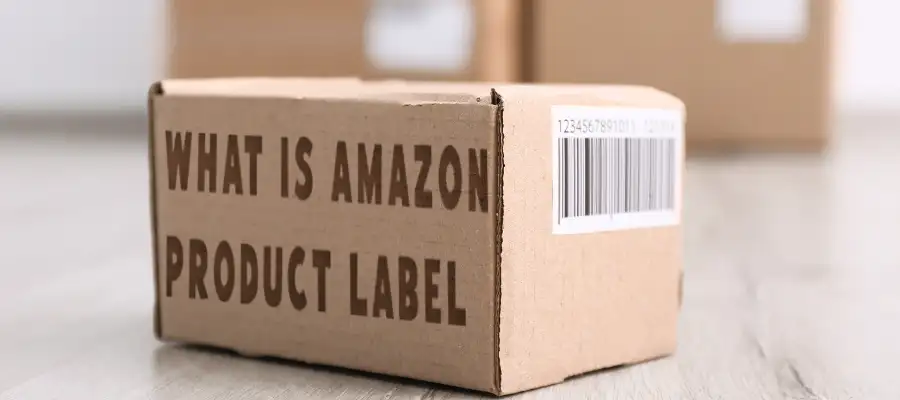If you’re new to selling on Amazon, one of the first challenges you’ll face is understanding how products are identified and tracked. You might think a barcode is just a barcode, but Amazon has its own system that goes far beyond the simple UPC you see in stores. These unique product labels are what connect your items to your Seller Central account, help Amazon manage millions of shipments each day, and most importantly, ensure that you get credit for every sale you make.
A product label is essentially
Understanding these codes can feel overwhelming at first, but once you know the differences and when to use each, labeling becomes less of a burden and more of a straightforward system. In this section, we’ll dive into what these identifiers really mean, why they matter, and how they affect your business as an Amazon seller.
ASIN vs. FNSKU vs. GTIN – The Full Breakdown
Amazon doesn’t just rely on one type of code. Instead, there are multiple layers of identification, and each serves a unique purpose. Let’s unpack them one by one.
ASIN (Amazon Standard Identification Number)
Every product on Amazon has an ASIN. This is a 10-character alphanumeric code automatically assigned when a product is listed in the marketplace. If you search for a product and scroll down its detail page, you’ll see the ASIN listed under “Product Details.”
An ASIN is not created for each individual unit of inventory you send to Amazon. Instead, an ASIN is tied to the product listing in Amazon’s catalog. This means if you send 10 identical products — for example, Blue Sneakers, Size 46 — all of them will be linked to the same ASIN.
However, ASINs are variation-specific, which is why different product attributes generate different ASINs. For example:
- Blue Sneakers, Size 46 → one ASIN
- Blue Sneakers, Size 44 → another ASIN
- Black Sneakers, Size 46 → a different ASIN
Here’s the important part: ASINs are product-specific, not seller-specific. That means if you and 20 other sellers all sell the exact same Bluetooth speaker, you’ll all share the same ASIN. ASINs help customers find and identify products in Amazon’s catalog, but they don’t tell Amazon which seller a unit belongs to.
FNSKU (Fulfillment Network Stock Keeping Unit)
The FNSKU is where things get personal. This is Amazon’s seller-specific barcode that links each physical unit to your Seller Central account. When Amazon scans an FNSKU, it doesn’t just see “wireless headphones”—it sees your wireless headphones from your inventory.
Unlike an ASIN, which is shared across all sellers for the same catalog listing, the FNSKU is unique to the combination of a seller and a product. This means that while multiple sellers may list the same item under a single ASIN, Amazon assigns a different FNSKU to each seller to ensure inventory is tracked separately inside the fulfillment network. For example, if three different sellers all offer Blue Sneakers, Size 46, they will share the same ASIN but each seller will have their own distinct FNSKU. This system guarantees accurate inventory management, prevents mix-ups between sellers, and ensures that every unit sold is correctly attributed to the right Amazon seller account.
This distinction is critical because it prevents your items from being mixed up with other sellers’ stock. If you rely only on UPCs or manufacturer barcodes, your inventory could be “commingled.” That means your carefully inspected products might get swapped with another seller’s lower-quality units. Using an FNSKU ensures separation and accountability.
Think of the FNSKU as Amazon’s way of saying: this unit belongs to Seller X, and only Seller X should get credit when it sells.
GTIN (Global Trade Item Number)
GTIN is the global standard for product identification, managed by GS1. Under the GTIN umbrella, you’ll find codes like UPC (common in the U.S.), EAN (common in Europe), and ISBN (for books). Unlike FNSKU, GTINs aren’t Amazon-specific; they’re recognized in retail stores, online marketplaces, and supply chains worldwide.
Most new Amazon sellers need to purchase GTINs from GS1 when creating a new product listing. Amazon uses the GTIN to validate your product’s legitimacy and make sure it’s properly cataloged. Once the product exists in Amazon’s system, the FNSKU can be layered on top to tie the item directly to you as the seller.
In short:
- ASIN = the product’s ID within Amazon’s catalog.
- FNSKU = your seller-specific barcode for FBA.
- GTIN = the universal product ID used everywhere.
Together, these codes form a system that makes Amazon’s massive fulfillment network run smoothly.
Do You Always Need an FNSKU?
This is one of the most common questions new sellers ask, and the answer is: it depends on how you choose to fulfill and label your products.
When you create a new listing in Seller Central, Amazon will ask whether you want to use the manufacturer’s barcode (UPC/EAN) or an Amazon barcode (FNSKU). If you choose the manufacturer barcode, Amazon may mix your inventory with other sellers who use the same UPC. This is called “commingled inventory.” It can work fine in some cases, but it carries risks—especially if other sellers have quality issues or counterfeit stock.
If you choose FNSKU, Amazon separates your inventory from everyone else’s, even if you’re all selling under the same ASIN. That means every time your unit is scanned, Amazon knows it belongs to you. For private label sellers who want full control over quality and customer experience, FNSKU is the safer choice.
Here are some scenarios:
- Retail arbitrage or wholesale sellers: If you’re sourcing products that many other sellers also list, you absolutely want to use FNSKU to avoid having your inventory mixed up with theirs.
- Private label sellers: Even if you’re the only seller on your ASIN, using FNSKU is still smart. It keeps your brand protected, ensures your units aren’t confused with generic versions, and makes returns easier to manage.
- FBM sellers: If you fulfill orders yourself (FBM), you don’t need FNSKU at all. These barcodes are only required for FBA shipments.
While Amazon doesn’t always force you to use FNSKU, experienced sellers overwhelmingly recommend enabling it as the default. It adds an extra layer of security and keeps your business running smoothly, even as your catalog grows.
Where Do Product Labels Come From?
Every Amazon seller eventually faces the same question: where do I actually get these labels? The answer depends on how you run your business and how much control you want over the process.
The most common option is to download your FNSKU labels directly from Seller Central. When you add a product to your inventory and enable the Amazon barcode, Seller Central automatically generates a printable label. You can download it as a PDF, print it yourself using a standard printer or a thermal label printer, and apply it by hand. This is often how sellers start out—simple, cheap, and immediate.
As your business grows, many sellers choose to delegate the labeling process to their suppliers. If you’re manufacturing in China or working with a wholesale distributor, you can send them the FNSKU PDF file and ask them to apply the labels during production or packaging. This saves you from the time and labor of stickering hundreds or thousands of units yourself.
Finally, Amazon itself offers a paid labeling service. For $0.55 per unit, you can have Amazon workers apply the FNSKU label when your products arrive at the fulfillment center. This is the most hands-off option, though the cost can add up if you’re shipping in bulk.
Amazon’s Recommendations and Best Practices
Amazon is very clear about how product labels should look and function. Their system relies on being able to scan millions of items a day, so precision matters. Here are some of their key recommendations:
- Print quality: Labels should be sharp, high-contrast, and scannable. Black ink on a white background is the gold standard.
- Placement: Labels should be placed on a flat, smooth surface—not over seams, corners, or curves that could distort the barcode.
- Size: The barcode should be large enough to scan easily but not so big that it covers important product information.
- Coverage: If your product already has a UPC printed on it and you are using FNSKU instead, the UPC must be fully covered to avoid confusion.
But best practices go beyond just what Amazon requires. Many sellers add extra information to their labels for internal efficiency:
- Product name or short title (helps you quickly recognize the item)
- Item number or SKU (your own internal system)
- Batch number / Lot code (for quality control)
- Expiration date (mandatory for perishable goods, helpful even for non-food products)
- Custom free text like “Fragile” or “New Packaging”
These additions don’t change how Amazon processes your item, but they make your warehouse workflow smoother and reduce mistakes when you or your team handle inventory.
Should Customers Benefit From Labels Too?
Most sellers think of labels as something for Amazon’s scanners, not for customers. But in reality, product labels can also create value for the end user.
Imagine a customer receiving a package and seeing not just a barcode, but also clear, readable information such as:
- The product name in plain English
- The size or variation (“Blue – Medium”)
- A batch number or manufacture date
This gives the buyer confidence that they got the right product, reassures them about freshness or authenticity, and can even reduce returns. While the barcode itself may not matter to the customer, the surrounding information can make a big difference. In this sense, labels become part of your brand experience.
Create Better Labels Using Online Tools
This is where Label Resizer comes in. Instead of wrestling with PDFs, resizing barcodes, and manually typing extra text, Label Resizer gives you a flexible way to build the exact labels you need.
With Label Resizer you can:
- Resize labels to fit different packaging, from small boxes to large cartons.
- Add extra information like SKU numbers, item numberint, or free-text notes.
- Generate enriched labels directly in Seller Central with the browser extension, so you don’t even need to leave your workflow.
- Create custom labels in bulk using Excel data, so you can merge your own information with Amazon’s required barcodes.
In other words, instead of treating labels as a rigid requirement, you can turn them into a flexible tool that adapts to your business.
Final Thoughts
Amazon product labels may seem like a small detail, but they play a huge role in keeping your business organized, your inventory safe, and your customers happy. By understanding the differences between ASIN, FNSKU, and GTIN, following Amazon’s best practices, and adding your own layer of useful information, you can make labels work harder for you.
And with tools like Label Resizer, the entire process becomes faster, simpler, and far less frustrating. Instead of wasting hours adjusting files, you can focus on what really matters—growing your Amazon business.


